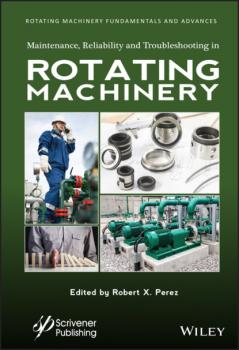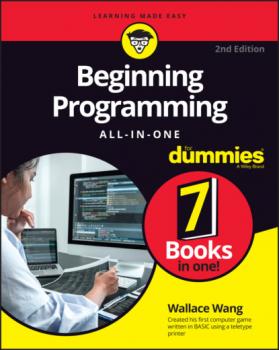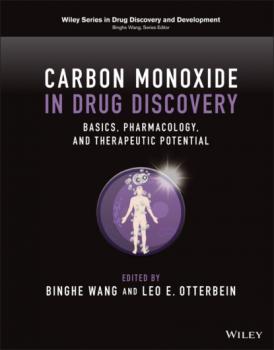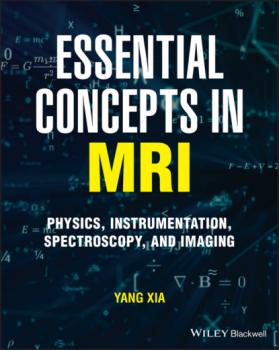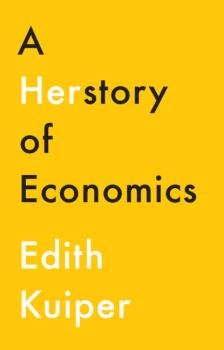ТОП просматриваемых книг сайта:
John Wiley & Sons Limited
Все книги издательства John Wiley & Sons LimitedАннотация
Maintenance, Reliabilty and Troubleshooting in ROTATING MACHINERY This broad collection of current rotating machinery topics, written by industry experts, is a must-have for rotating equipment engineers, maintenance personnel, students, and anyone else wanting to stay abreast with current rotating machinery concepts and technology. Rotating machinery represents a broad category of equipment, which includes pumps, compressors, fans, gas turbines, electric motors, internal combustion engines, and other equipment, that are critical to the efficient operation of process facilities around the world. These machines must be designed to move gases and liquids safely, reliably, and in an environmentally friendly manner. To fully understand rotating machinery, owners must be familiar with their associated technologies, such as machine design, lubrication, fluid dynamics, thermodynamics, rotordynamics, vibration analysis, condition monitoring, maintenance practices, reliability theory, and other topics. The goal of the “Advances in Rotating Machinery” book series is to provide industry practitioners a time-savings means of learning about the most up-to-date rotating machinery ideas and best practices. This three-book series will cover industry-relevant topics, such as design assessments, modeling, reliability improvements, maintenance methods and best practices, reliability audits, data collection, data analysis, condition monitoring, and more. Volume one began the series by focusing on design and analysis. Volume two continues the series by covering important machinery reliability concepts and offering practical reliability improvement ideas. Best-in-class production facilities require exceptional machinery reliability performance. In this volume, exceptional machinery reliability is defined as the ability of critical rotating machines to consistently perform as designed, without degradation or failure, until their next scheduled overhaul. Readers will find this volume chock-full of practical ideas they can use to improve the reliability and efficiency of their machinery. Maintenance, Reliability and Troubleshooting in Rotating Machinery covers, among many other topics: General machinery reliablity advice Understanding failure data Design audits and improvement ideas Maintenace best practices Analyzing failures
Аннотация
Let there be code! Beginning Programming All-in-One For Dummies offers one guide packed with 7 books to teach you programming across multiple languages. Coding can seem complex and convoluted, but Dummies makes it simple and easy to understand. You’ll learn all about the principles of programming, algorithms, data structures, debugging programs, unique applications of programming and more while learning about some of the most popular programming languages used today. Move confidently forward in your computer science coursework or straight into the workforce. You’ll come away with a rock-solid foundation in the programming basics, using data, coding for the web, and building killer apps. Learn the basics of coding, including writing and compiling code, using algorithms, and data structures Get comfortable with the syntax of several different programming languages Wrap your mind around interesting programming opportunities such as conducting biological experiments within a computer or programming a video game engine Develop cross-platform applications for desktop and mobile devicesThis essential guide takes the complexity and convolution out of programming for beginners and arms you with the knowledge you need to follow where the code takes you.
Аннотация
DIATOM MICROSCOPY The main goal of the book is to demonstrate the wide variety of microscopy methods being used to investigate natural and altered diatom structures. This book on Diatom Microscopy gives an introduction to the wide panoply of microscopy methods being used to investigate diatom structure and biology, marking considerable advances in recent technology including optical, fluorescence, confocal and electron microscopy, surface-enhanced Raman spectroscopy (SERS), atomic force microscopy (AFM) and spectroscopy as applied to diatoms. Each chapter includes a tutorial on a microscopy technique and reviews its applications in diatom nanotechnology and diatom research. The number of diatomists, diatom research, and their publications are increasing rapidly. Although many books have dealt with various aspects of diatom biotechnology, nanotechnology, and morphology, to our knowledge, no volume exists that summarizes advanced microscopic approaches to diatoms. [b]Audience The intended audience is academic and industry researchers as well as graduate students working on diatoms and diatom nanotechnology, including biosensors, biomedical engineering, solar panels, batteries, drug delivery, insect control, and biofuels.
Аннотация
When the Treasury lost control of interest rates to the Bank of England in 1997, its status looked under threat. However, it quickly reasserted its power by dominating policymaking across Whitehall and diminishing other ministries in the process. It also successfully fought off attempts by Prime Ministers, from Blair to Johnson, to cut it down to size. In this fascinating insider account, based on in-depth interviews with the Chancellors and key senior officials, Howard Davies shows how the past twenty-five years have nonetheless been a roller-coaster ride for the Treasury. Heavily criticized for its response to the global financial crisis, and for the rigours of the austerity programme, it also ran into political controversy through its role in the Scottish referendum and the Brexit debate. The Treasury’s dire predictions of the impact of Brexit have not been borne out. Redemption of a kind, though a costly one, came from its muscular response to the COVID crisis. Anyone with an interest in economic policymaking, in the UK and elsewhere, will find this a valuable and entertaining account.
Аннотация
There were only a few women economists who made it to the surface and whose voices were heard in the history of economic thought of Adam Smith, David Ricardo, John Maynard Keynes, and Milton Friedman – right? Wrong! In this book, distinguished economist Edith Kuiper shows us that the history of economic thought is just that, a his -story, by telling the her story of economic thought from the perspective of women economic writers and economists. Although some of these women were well known in their time, they were excluded from most of academic economics, and, over the past centuries, their work has been neglected, forgotten, and thus become invisible. Edith Kuiper introduces the reader to an amazing crowd of female pioneers and reveals how their insights are invaluable to understanding areas of economics ranging from production, work, and the economics of the household, to income and wealth distribution, consumption, public policy, and much more. This pathbreaking book presents a whole new perspective on the development of economic thought. It will be essential reading for all students and scholars of the history of economic thought and feminist economics.
Аннотация
Provides an overview of state-of-the-art research on the science of reading, revised and updated throughout The Science of Reading presents the most recent advances in the study of reading and related skills. Bringing together contributions from a multidisciplinary team of experts, this comprehensive volume reviews theoretical approaches, stage models of reading, cross-linguistic studies of reading, reading instruction, the neurobiology of reading, and more. Divided into six parts, the book explores word recognition processes in skilled reading, learning to read and spell, reading comprehension and its development, reading and writing in different languages, developmental and acquired reading disorders, and the social, biological, and environmental factors of literacy. The second edition of The Science of Reading is extensively revised to reflect contemporary theoretical insights and methodological advances. Two entirely new chapters on co-occurrence and complexity are accompanied by reviews of recent findings and discussion of future trends and research directions. Updated chapters cover the development of reading and language in preschools, the social correlates of reading, experimental research on sentence processing, learning to read in alphabetic orthographies, comorbidities that occur frequently with dyslexia, and other central topics. Demonstrates how different knowledge sources underpin reading processes using a wide range of methodologies Presents critical appraisals of theoretical and computational models of word recognition and evidence-based research on reading intervention Reviews evidence on skilled visual word recognition, the role of phonology, methods for identifying dyslexia, and the molecular genetics of reading and language Highlights the importance of language as a foundation for literacy and as a risk factor for developmental dyslexia and other reading disorders Discusses learning to read in different types of writing systems, with a language impairment, and in variations of the home literacy environment Describes the role of contemporary analytical tools such as dominance analysis and quantile regression in modelling the development of reading and comprehensionPart of the acclaimed Wiley Blackwell Handbooks of Developmental Psychology series, the second edition of The Science of Reading: A Handbook remains an invaluable resource for advanced students, researchers, and specialist educators looking for an up-to-date overview of the field.

